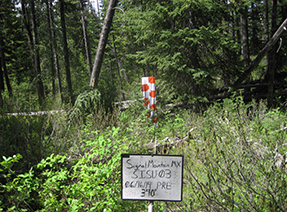Combined efforts by NPS and Teton interagency fire crews, and support from other park divisions, led to the completion of an important fuels reduction project along Signal Mountain Summit Road in Grand Teton National Park in summer 2014. The intent was to provide for firefighter and public safety and to reduce fuels around sensitive communications structures and equipment on the summit. Fire managers now have more options to manage natural ignitions in the area.

Wildland Fire Fuels Reduction Project

Signal Mountain Summit Road is an immensely popular narrow, winding, dead-end road in Grand Teton National Park. Providing spectacular views both of the Teton Range and the lakes, river, and valley below, at any given time during the summer, every parking space is full, both at the summit and the midway Jackson Lake Overlook. The Signal Mountain summit is also home to crucial communications equipment important for radio and phone transmissions in the park and parts of the Bridger-Teton National Forest.
Combined efforts by Teton interagency fire crews, as well as support from other park divisions, led to the completion of an important fuels reduction project along Signal Mountain Summit Road in summer 2014. The intent of the fuels project was to provide for firefighter and public safety and to reduce fuels around sensitive communications structures and equipment located on the summit. With the project complete, fire managers will have more options to manage natural ignitions in the area and fire responses can be conducted more safely.
Due to hazards to both public and firefighters, the narrow, winding Signal Mountain Summit Road was closed from 10:00 a.m. to 4:00 p.m. Tuesdays through Thursdays from June 17 to July 16, 2014. Crews cut small trees and brush and removed accumulations of downed trees, limbs, and other forest debris adjacent to the road. Additionally, firefighters cut dead standing trees that could otherwise fall on the road. In doing so, fire crews created a buffer for 80 feet from the centerline on each side of the upper mile and a half of the road.
Crews chipped and spread some of the smaller material alongside the road. Fire crews, with the help of students from a Youth Conservation Program, built piles from the remaining woody debris that will be burned in the fall or winter when it is safe to do so.
The project required interdisciplinary collaboration. Fire staff coordinated their efforts with the Grand Teton public affairs office, visitor services, interpretive division, and concession operators to ensure that the public was aware of the temporary road closure.
Contact: Andy Hall, prescribed fire technician
Email: Andrew_j_hall@nps.gov
Phone: (307) 739-3319
Last updated: December 14, 2017
